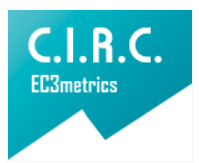Vocal Phonoaudiological Attention to Actors: The Option (or need) to Contribute in The Promotion of their Vocal-Emotional Well-being
Atención Fonoaudiológica Vocal a Actores: La Opción (o necesidad) de Aportar en la Promoción de su Bienestar Vocal-Emocional
Main Article Content
From a biopsychosocial perspective, Speech and
Language Pathology (SLP) should emphasize in the
health and communicative wellbeing since voice.
In this context, Will SLP, as a promoting discipline of
communicative well-being, require spaces for the
promotion of emotional well-being during vocal
habilitation in actors as a vocal health care strategy? The
present text aims to reflect on some of the fundamentals
that invite SLP to generate spaces for vocal-emotional
exploration in instances of vocal empowerment with
the intention of promoting the health, well-being
and professional development of the performer. It is
proposed that the vocal empowerment is a space that
allows deepening the knowledge and self-expression,
favoring the quality of life and the scenic creation of the
Performer.This has repercussions in two lines as ethical
responsibility: SLP need to learn to act like a guide
/ accompaniment in this process to deepen beyond
the technical-vocal aspects and the need to generate
evidence of the disciplinary path approach.
Downloads
Publication Facts
Reviewer profiles N/A
Author statements
Indexed in
- Academic society
- Bogotá: Corporación Universitaria Iberoamericana
- Publisher
- Bogotá: Corporación Universitaria Iberoamericana
Article Details
Aronson, A. E. (1985). Clinical Voice Disorders: An Interdisciplinary Approach. Journal of Voice, 66(6), 656.
Backes, L. B. (2010, Agosto 9). Voz & emoção: provocações a partir de Wolfsohn, Roy Hart e Pantheatre., (pp. 1-140). [BRA].
Briones Moraga, M. P., & Ríos Saavedra, T. p. (2013). No todo es cuerpo, todo está en el cuerpo. Re-aprendizaje corporal y educación emocional en estudiantes de primer semestre de la carrera de actuación. Retrieved from http://bibliotecadigital.academia.cl/handle/123456789/1414
Bustos Sánchez, I. (2003). La voz La técnica y la expression (2 ed.). (S. Service, Ed.) [Esp]: Paidotribo.
Calmels, D. (2010). La gesta corporal: El cuerpo en los procesos de comunicación y aprendizaje. Desenvolupa(32).
Clasificación Internacional del Funcionamiento, de la Discapacidad y de la Salud. (2001). In IMSERSO (Ed.). Madrid, {Esp]: organizaciòn mundial de la salud.
Ferrone, C., G. J., & LO, R. (2011). The impact of extended voice use on the acoustic characteristics of phonation after training and performance of actors from the la mama experimental theater club. Journal of Voice, 25(3), 123-137.
Grotowski, J. (1970). hacia un teatro pobre. [MEX].
Grotowski, J. (1987). El Performer. Máscara. Cuaderno iberoamericano de reflexión sobre escenología, 76-79.
Hart, R. (1972). The Objective Voice. Retrieved Octubre 2, 2016, from or the 7th International Congress of Psychodrama and Sociometry: http://www.roy-hart.com/objective.voice.htm
Jung, C. G. (1995). In El hombre y sus simbolos (p. 320). Paidos iberica.La educaciòn del ser emocional. (2007). In J. Casassus. [CHL]: Indigo cuarto propio.
Lessac, A. (1997). The use and training of the human voice: a bio-dynamic approach to vocal life. [USA]: McGraw-Hill/
Mayfield.Max-Neef, M., Elizalde, A., & Hopenhayn, M. (1986). Desarrollo a escala humana opciones para el futuro. (B. CF+S, Ed.) Retrieved from http://habitat.aq.upm.es/deh/adeh.pdf
McHugh-Munier, C., Scherer, K., Lehmann, W., & Scherer, U. .. (1997). Coping Strategies, Personality, and Voice Quality in Patients with Vocal Fold Nodules and Polyps. J voice, 11(4), 452-61.
Romero R, L. (2012). Desplazamiento respecto de los saberes disciplinares de la Fonoaudiología. Revista Chilena de Fonoaudiología, 11, 99-106.
Ruiz, M., & Monroy, F. (1994). Desarrollo profesional de la voz. Gaceta S.A, 239-240, 416- 419.
Toro Sevilla, J. M. (2004). Crea-ti-vida-d, cuerpo y comunicación. Científica de Comunicación y Educación, 151-159.
Weber, R. J. (2000). The Created self: Reinventing Body, Persona and Spirit. (W. N. Company, Ed.)
Winnicott, D. (1967). El concepto de individuo sano. En Winnicott, ed. Trieb

















